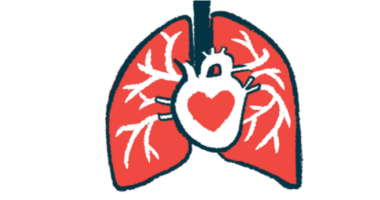Classification of Pulmonary Hypertension
WHO Classification
The symptoms, diagnosis, and treatment of pulmonary hypertension (PH) vary according to the different types and classification. The most commonly used classification for the disease is the one defined by the World Health Organization (WHO), which divides the disease into groups and classes.
The international classification of diseases created by WHO comprises a standard diagnostic tool for physicians, nurses, other providers, researchers, health information managers and coders, health information technology workers, policymakers, insurers, and patient organizations. To determine the classification of PH, WHO analyzed the general health situation of patients, as well as incidence and prevalence of the disease.
The classification has been expanded to five groups, which are described below.
Group 1: Pulmonary Arterial Hypertension
Group 1 includes pulmonary arterial hypertension (PAH), which can be the result of one of several causes, or of no apparent cause (idiopathic). Some of the causes include other diseases, treatments, as well as treatments that can lead to the narrowing of pulmonary arteries. In rare cases, gene mutations can also cause the disease; this is known as familial or heritable PAH.
Group 2: PH Due to Left Heart Disease
Group 2 refers to PH that affects the left side of the heart, such as mitral valve disease or long-term high blood pressure. Included in this group is pulmonary venous hypertension, which is associated with high blood pressure in the arteries of the lungs due to the heart being unable to efficiently carry blood away from the lungs.
Group 3: PH Due to Lung Disease or Chronic Hypoxia
Group 3 includes PH resulting from lung diseases or a shortage of oxygen in the body (hypoxia). Causes of pulmonary hypoxic hypertension include various lung diseases, such as chronic obstructive pulmonary disease and diffuse parenchymal lung disease. Sleep-disordered breathing, a group of diseases that affect breathing during sleep, like obstructive sleep apnea (OSA), are also included in this group.
Group 4: PH Due to Blood Clots in Lungs
Group 4 refers to cases of PH caused by blood clots in the lungs or blood-clotting disorders. This group includes chronic thromboembolic pulmonary hypertension (CTEPH), which is a rare type of PH associated with abnormally high pressure in the blood vessels of the lungs, caused by the formation of blood clots.
Group 5: PH Induced by Other Health Conditions
Group 5 includes causes of PH that do not fit into any of the other four groups. These are widely split into four categories: blood disorders, systemic disorders, metabolic disorders, and other conditions. The strain on lung vessels caused by certain tumors also may be related to the development of PH.






